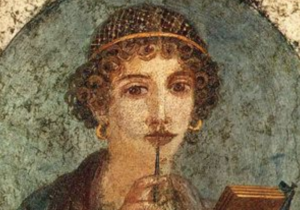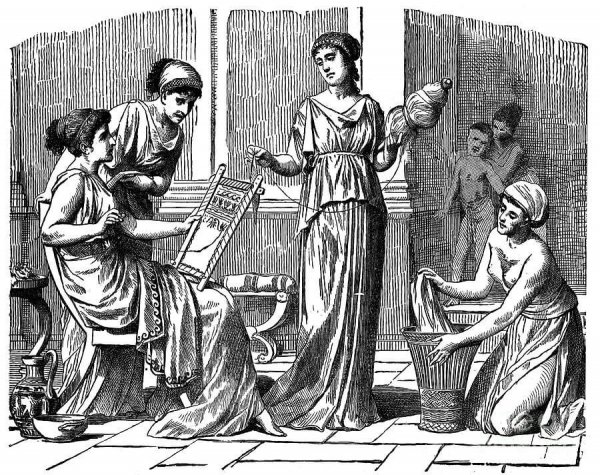The Egyptian Gynecologist Metrodora: Ahead of Her Time

The Egyptian gynecologist Metrodora was an outstanding figure within the field of medicine. Her work as a researcher and disseminator of topics related to gynecology earned her unprecedented recognition from her contemporaries.
In order to understand more about this brilliant Egyptian woman, we need to go back to a few centuries before her time. To talk about Egypt, we have to talk about Greece. And talking about Greece without mentioning medicine is difficult, to say the least.
We all know that the home of some of the great thinkers of history was also the home of some of the most brilliant physicians of our era, with Hippocrates and Galen at the head. But what does Greece have to do with Egypt and this young gynecologist?
Firstly, Egypt lived through the Hellenistic period between 323 BC and 30 BC. During that same period, Egyptian culture flourished, with its main focal point being the city of Alexandria.
This enclave was founded by Alexander the Great and located in the western part of the Nile Delta. It even had a special status as a Greek city, with a different administration from the Egyptian one. Sometime later, it was colonized by the Roman Empire. Then, for more than 600 years, it became another province, even though Greek remained a cultured language there.
In this last historical period, the character of Egyptian gynecologist Metrodora and her relevance to the field of medicine began to emerge.

Who was the Egyptian gynecologist Metrodora?
Her name is probably not too familiar for most people. The mystery surrounding her life, as well as her research, is still a source of speculation and rumor. What is certain is that she stood out as a gynecologist, midwife, and scholar of women’s medical problems. One curious aspect of her writings is that she recorded everything in strict alphabetical order.
Experts believe that Metrodora was born in Egypt, between 200 and 400 AD. Highly educated, she grew up in a society that, while not as sexist as the Greeks and Romans (who considered women to be eternal minors), did view women as merely complementary to men.
However, it was fortunate that, in ancient Egypt, the laws treated men and women almost equally. This was unthinkable in Greece or Rome.
They could divorce, had a right to inheritance, and the abuse of women was frowned upon (although that didn’t prevent it from happening). Women could also own their own businesses or work in certain occupations, including health care.
“Wherever the art of medicine is loved, there’s also a love of humanity.”
-Hippocrates of Kos-
In fact, the meaning of Metrodora’s name is curious, to say the least. In Greek, metro meant “womb” and dora, “gift”. She certainly lived up to her name, specializing in diseases and disorders specifically suffered by women.
During her career, she wrote numerous treatises related to gynecology. Her medical treatise, On the Diseases and Cures of Women, consists of 63 chapters and is still widely used today. In it, she not only addresses medical issues but also provides general advice on public health and milder problems (such as hemorrhoids).
Medical innovations and advances
Her contributions to medicine include the use of the speculum for medical examinations. In addition to that, she created the tampon as a contraceptive method and to treat vaginal infections. She also developed medical compounds not found in any other studies, and established guidelines to determine whether a woman had been sexually abused or assaulted.
She also worked on the reconstruction of the face, breasts, and hymen. In the case of the latter, her aim was to help women who weren’t virgins avoid social stigma.
In the same way, she was one of the first specialists to request surgical interventions in cases of cancer, which was called “malignant ulcer” at that time.
Mysteries surround the figure of Metrodora
Historians don’t know whether Metrodora did most of her work in Greece or Egypt. This is due to the existing confusion that came from the many territorial movements experienced in the country of the pharaohs.
Similarly, for many years, there were rumors that Metrodora’s true identity was none other than the famous Cleopatra. Therefore, it isn’t surprising that, in some research, she’s referred to as “Cleopatra Metrodora”, even though there’s no indication that this story is true.
Whoever she was, we can still admire her very important work, all thanks to her excellent writings. Some of them are preserved in the Laurentian Library in Florence, and will delight any researcher (or anyone else) who decides to investigate the biography of this impressive woman.
All cited sources were thoroughly reviewed by our team to ensure their quality, reliability, currency, and validity. The bibliography of this article was considered reliable and of academic or scientific accuracy.
-Sharon L. James y Sheila Dillon: A Companion to Women in the Ancient World, p. 123. John Wiley and Sons, 2011
–Tsoucalas Gregory y Sgantzos Markos: Aspasia and Cleopatra Metrodora, Two Majestic Female Physician Surgeons in the Early Byzantine Era. Journal of Universal Surgery, 2016.
This text is provided for informational purposes only and does not replace consultation with a professional. If in doubt, consult your specialist.








